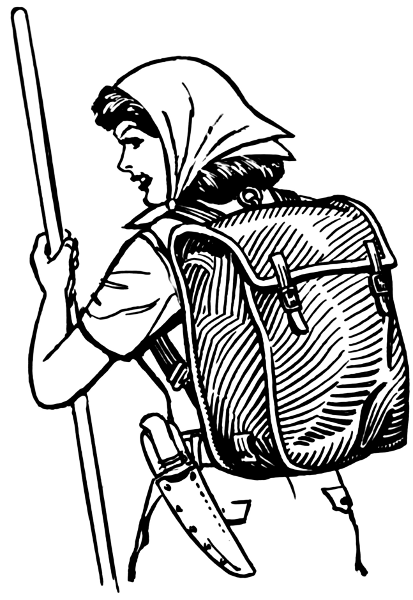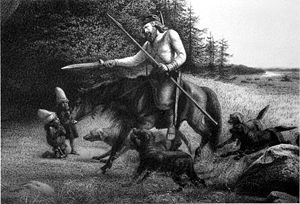 |
| I will cut you if you think of messing with my bag. |
It's so simple! Your carrying capacity is your Stamina/Con/Str/whatever the GM likes score.
Your Initiative is your number of empty slots+your Dex/Agil/whatever modifier. Higher numbers will act first.
Keep in mind: Armor takes up slots. In most elf games, it will be the same as the armor's bonus. Or you might want to go with the armor's penalty score.
Small weapons take up one slot, and standard ones take two. Large weapons can either be high damage or have reach. The high damage ones take up a third slot.
Does this mean we will see people take off their packs all the time? Yes! That is a thing that makes sense; more sense than fighting with a rucksack flopping about. But it's kinda crazy to try and take one off in melee, so choose the right time.
If you need a spell to guard your pack, you can find one in
this little RPG I wrote.
Gordian knot: Tie your bag closed in such a way as it cannot be opened by mundane means, though it readily opens at your commanding snap. If would-be thieves attempt violence against the bag or its knot, they find that their sword is tied fast in its scabbard, their hand tied behind their back, etc. The knot is always protected by strange circumstances tying more and more things up, and is very hard to outsmart. The knot grows like vengeful kudzu the more people want to harm it. Given time, it could cover the world… Alternatively, this spell can untie an extant gordian knot, and kill its knot-babies.
Casting Fail: Pratfall involving knots tying or untying.
Great Casting: If someone thinks about getting into your bag, their brain gains a new knot, rearranged in such a way that they cannot conceive of it further.
Casting Crit: If someone thinks about getting into your bag, their brain gains a new knot, rearranged in such a way that they decide to guard it instead. If someone were to eat that person's brains, the prions in it would re-tie the proteins in the eater's brain to carry on the guarding cycle.
If playing DCC or other DnDalike that lacks monster ability scores, a monster's initiative count is its Reflex save plus 10 minus weapons and armor.
One more idea: Spells take up inventory slots (until cast). Contributes to that whole weak wizard trope and encourages to not use heavy arms or armors.
On MeWe, someone pointed out that it would be a good idea to carry gear on a hobo-stick,
like the romans once did.
----
Claytonian at the gmails.





